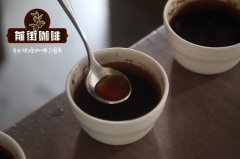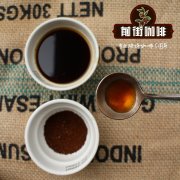How about Ethiopian coffee?

Professional coffee knowledge exchange more coffee bean information please follow the coffee workshop (Wechat official account cafe_style)
Since ancient times, Ethiopians have planted, harvested, treated and cooked by hand. In the 1970s and 1980s of industrialization, the country also benefited from misfortune because it promoted socialism and retained small-scale production under the prohibition of the military regime Derg. Until modern times, the planting mode of farmers is also quite primitive. In the western forest region (Kaffa,Illubabor), they use local materials to harvest coffee fruits (Forest Coffees) from wild fruit trees. They don't fertilize or cut tree trunks, so their production capacity is very low. In the Semi Forest Farming model, farmers move trees from the forest to farmland and irrigate them with organic manure. The most common Garden farming is family farming, which is planned by the nursery. More than half of farmers also operate in the most common model in Africa.
After harvest, farmers will sell the fruit to nearby treatment plants. However, because Egypt has registered the production areas (Yirgacheffe,Sidamo,Harar), the law stipulates that farmers in the same area can only be sold to the treatment plants in the same area. The price is also regulated by the government. With the exception of a few accredited cooperatives, all coffee is mixed and auctioned by the Commodity Exchange (ECX). For example, the exchange code WSDB coffee, is the first-class and second-class water wash Sidamo. But this shipment is actually a mixture of Aleda, Wondo, Amaro, Dale, Wensho and other nine producing areas in Sidamo province! Under the tide of boutique products that like to "find the root", the approach of the authorities is going against the trend.
Holy Coffee Sacred Coffee
Zege is a small peninsula on the edge of Lake Lake Tana. In the past decade, deforestation has been a serious problem, but the rainforest on the Zege Peninsula has survived. The reason is rumored to be related to a legend. It is said that the saint Betre Maryam divided his walking stick into three here, while the top part fell to form the first coffee tree in the Zege area. This is a story recorded in the murals in the seven monasteries of Zege and in ancient books. In addition to the strong religious environment, the coffee tree formed by the saint's walking stick seems to defend and depend on the surrounding forest.
Coffee from the Zege forest is cultivated and produced by missionaries on the peninsula and local farmers, originally for self-sufficiency or to grow coffee at the local market exchange. In recent years, with the support of the World residents' Social Organization (World Habitant Society), Zege Forest Coffee has also become part of the project promoted by the organization. Promise to protect the rainforest, regional development, sustainable tourism, attach importance to the maintenance of monasteries and art assets handed down to this day, and consolidate its unique "sacred" lineage.
Zege coffee is produced every two years, is the oldest coffee native species, with a hint of red wine aroma, supple, mellow, round, soft sour taste, fruit aroma overflowing. Tasting at different time points and temperatures, the taste is very different, and it is a coffee with high waiting value.
Country: Ethiopia
Origin: Lake Tana Zege Peninsula
Variety: Arabica
Treatment: insolation
Baking: medium baking
Important Notice :
前街咖啡 FrontStreet Coffee has moved to new addredd:
FrontStreet Coffee Address: 315,Donghua East Road,GuangZhou
Tel:020 38364473
- Prev

Introduction of Coffee from Columbia Condor Company in Linglong producing area of Columbia
Professional coffee knowledge exchange more coffee bean information please follow the coffee workshop (Wechat official account cafe_style) Colombia is currently the third largest coffee producing country in the world, after Brazil and Vietnam, first planted coffee in the 1830s, to the 20th century coffee accounted for the largest export crops, the unique mountain terrain coupled with a variety of micro-climate, provides an ideal planting ring
- Next

Is the coffee in Malawi good in Africa? What's the difference between Malawian and Kenyan coffee beans?
For more information on coffee beans, please follow the Coffee Workshop (Wechat official account cafe_style) which was discovered in the prostitute forest southwest of Abyssinia (present-day Ethiopia) since 1931. It has been introduced to Kenya, Kanda, Tanshannis, Tanshannis and Costa rica in Africa for nearly a century, and was brought to Costa rica in 1970.
Related
- Detailed explanation of Jadeite planting Land in Panamanian Jadeite Manor introduction to the grading system of Jadeite competitive bidding, Red bid, Green bid and Rose Summer
- Story of Coffee planting in Brenka region of Costa Rica Stonehenge Manor anaerobic heavy honey treatment of flavor mouth
- What's on the barrel of Blue Mountain Coffee beans?
- Can American coffee also pull flowers? How to use hot American style to pull out a good-looking pattern?
- Can you make a cold extract with coffee beans? What is the right proportion for cold-extracted coffee formula?
- Indonesian PWN Gold Mandrine Coffee Origin Features Flavor How to Chong? Mandolin coffee is American.
- A brief introduction to the flavor characteristics of Brazilian yellow bourbon coffee beans
- What is the effect of different water quality on the flavor of cold-extracted coffee? What kind of water is best for brewing coffee?
- Why do you think of Rose Summer whenever you mention Panamanian coffee?
- Introduction to the characteristics of authentic blue mountain coffee bean producing areas? What is the CIB Coffee Authority in Jamaica?

